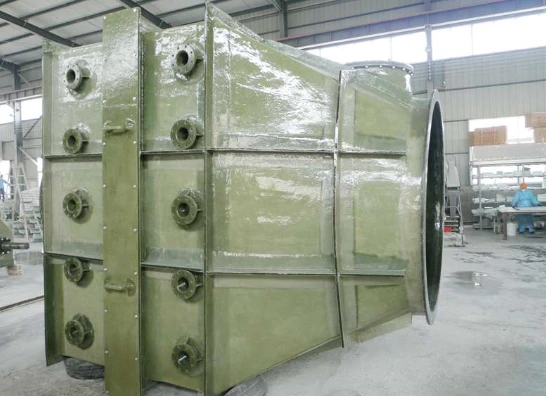
-
 Afrikaans
Afrikaans -
 Albanian
Albanian -
 Amharic
Amharic -
 Arabic
Arabic -
 Armenian
Armenian -
 Azerbaijani
Azerbaijani -
 Basque
Basque -
 Belarusian
Belarusian -
 Bengali
Bengali -
 Bosnian
Bosnian -
 Bulgarian
Bulgarian -
 Catalan
Catalan -
 Cebuano
Cebuano -
 China
China -
 China (Taiwan)
China (Taiwan) -
 Corsican
Corsican -
 Croatian
Croatian -
 Czech
Czech -
 Danish
Danish -
 Dutch
Dutch -
 English
English -
 Esperanto
Esperanto -
 Estonian
Estonian -
 Finnish
Finnish -
 French
French -
 Frisian
Frisian -
 Galician
Galician -
 Georgian
Georgian -
 German
German -
 Greek
Greek -
 Gujarati
Gujarati -
 Haitian Creole
Haitian Creole -
 hausa
hausa -
 hawaiian
hawaiian -
 Hebrew
Hebrew -
 Hindi
Hindi -
 Miao
Miao -
 Hungarian
Hungarian -
 Icelandic
Icelandic -
 igbo
igbo -
 Indonesian
Indonesian -
 irish
irish -
 Italian
Italian -
 Japanese
Japanese -
 Javanese
Javanese -
 Kannada
Kannada -
 kazakh
kazakh -
 Khmer
Khmer -
 Rwandese
Rwandese -
 Korean
Korean -
 Kurdish
Kurdish -
 Kyrgyz
Kyrgyz -
 Lao
Lao -
 Latin
Latin -
 Latvian
Latvian -
 Lithuanian
Lithuanian -
 Luxembourgish
Luxembourgish -
 Macedonian
Macedonian -
 Malgashi
Malgashi -
 Malay
Malay -
 Malayalam
Malayalam -
 Maltese
Maltese -
 Maori
Maori -
 Marathi
Marathi -
 Mongolian
Mongolian -
 Myanmar
Myanmar -
 Nepali
Nepali -
 Norwegian
Norwegian -
 Norwegian
Norwegian -
 Occitan
Occitan -
 Pashto
Pashto -
 Persian
Persian -
 Polish
Polish -
 Portuguese
Portuguese -
 Punjabi
Punjabi -
 Romanian
Romanian -
 Russian
Russian -
 Samoan
Samoan -
 Scottish Gaelic
Scottish Gaelic -
 Serbian
Serbian -
 Sesotho
Sesotho -
 Shona
Shona -
 Sindhi
Sindhi -
 Sinhala
Sinhala -
 Slovak
Slovak -
 Slovenian
Slovenian -
 Somali
Somali -
 Spanish
Spanish -
 Sundanese
Sundanese -
 Swahili
Swahili -
 Swedish
Swedish -
 Tagalog
Tagalog -
 Tajik
Tajik -
 Tamil
Tamil -
 Tatar
Tatar -
 Telugu
Telugu -
 Thai
Thai -
 Turkish
Turkish -
 Turkmen
Turkmen -
 Ukrainian
Ukrainian -
 Urdu
Urdu -
 Uighur
Uighur -
 Uzbek
Uzbek -
 Vietnamese
Vietnamese -
 Welsh
Welsh -
 Bantu
Bantu -
 Yiddish
Yiddish -
 Yoruba
Yoruba -
 Zulu
Zulu
fiberglass fitting
Understanding Fiberglass Fittings Characteristics and Applications
Fiberglass fittings have emerged as a crucial component in various industries due to their exceptional properties and versatility. Composed primarily of glass fibers and resin, these fittings are renowned for their strength, durability, and resistance to corrosion. This article explores the characteristics, benefits, and applications of fiberglass fittings, providing insights into why they are a preferred choice for many engineering projects.
Characteristics of Fiberglass Fittings
One of the most significant characteristics of fiberglass fittings is their high tensile strength, which allows them to endure considerable stress without deforming or breaking. This strength is enhanced by the process of weaving glass fibers that are then impregnated with a resin, typically epoxy or polyester. The result is a robust material capable of withstanding harsh conditions.
Fiberglass is also lightweight compared to other materials like steel and concrete, making it easier to handle and install. This reduced weight does not compromise its strength, as fiberglass fittings can still support heavy loads and withstand high pressure. Furthermore, fiberglass has excellent resistance to environmental elements, including moisture, chemicals, and UV radiation, which makes it an ideal choice for outdoor applications and environments that are prone to exposure to harsh chemicals.
Another notable feature is the low thermal conductivity of fiberglass, allowing it to maintain its structural integrity at various temperatures. This characteristic is particularly advantageous in applications requiring insulation or exposure to fluctuating thermal conditions. Additionally, fiberglass fittings can be molded into intricate shapes, providing flexibility in design that is often not possible with other materials.
Benefits of Using Fiberglass Fittings
Choosing fiberglass fittings over traditional materials offers numerous advantages. One of the primary benefits is corrosion resistance. Unlike metal fittings that can rust and corrode when exposed to moisture or chemicals, fiberglass maintains its integrity over time, resulting in lower maintenance costs and longer lifespans.
fiberglass fitting

The lightweight nature of fiberglass fittings also translates to lower transportation and installation costs. Their ease of handling means that fewer labor resources are required to install them, further enhancing cost-effectiveness. Moreover, because fiberglass does not require coatings to resist corrosion, there are additional savings in maintenance and replacement over the years.
Economically, fiberglass fittings can provide substantial return on investment. With their durability and resistance to environmental stressors, industries can expect reduced downtime and enhanced operational efficiency, thereby improving overall productivity.
Applications of Fiberglass Fittings
The versatility of fiberglass fittings allows for a wide range of applications across various sectors. In the construction industry, they can be used for piping systems, tanks, and ducts, making them an optimal choice for transportation of both water and chemicals. The oil and gas sector also utilizes fiberglass fittings in offshore platforms and pipelines to mitigate issues associated with corrosion and weight.
In addition, the electrical industry employs fiberglass fittings in producing insulators and components that offer both mechanical strength and electrical insulation. The transportation sector benefits from fiberglass components in vehicles, trailers, and storage tanks, contributing to a reduction in weight and enhancing fuel efficiency.
Furthermore, fiberglass fittings are increasingly used in marine applications for boat hulls and components, providing durability and resistance to marine environments. In agriculture, fiberglass fittings are utilized in irrigation systems due to their resilience against harsh chemical fertilizers and pesticides.
Conclusion
In summary, fiberglass fittings are an outstanding choice for various applications due to their strength, lightweight nature, and resistance to corrosion and environmental stressors. Their versatility makes them ideal for use across multiple industries, enhancing efficiency and reducing costs. As technology advances, the demand for fiberglass fittings is likely to grow, further underscoring their significance in modern engineering and construction projects. Embracing the benefits of fiberglass fittings can lead to more sustainable practices, cost savings, and improved performance in a myriad of applications.









